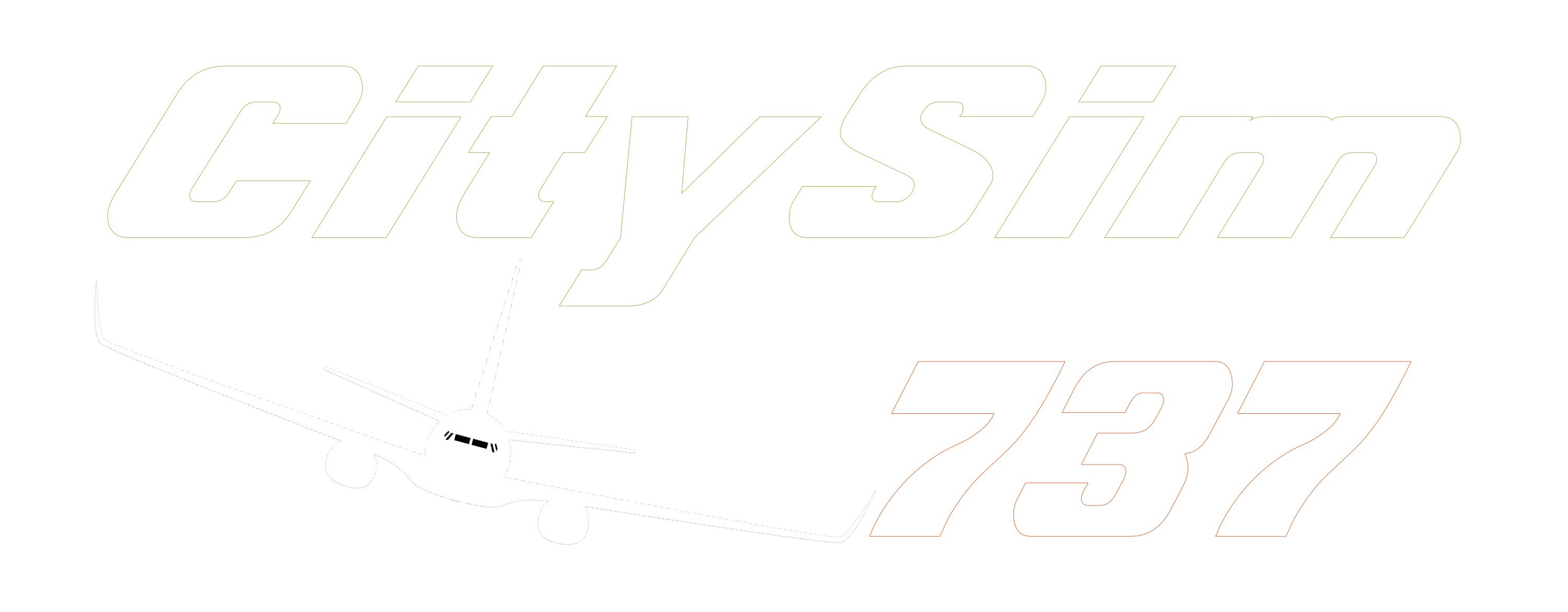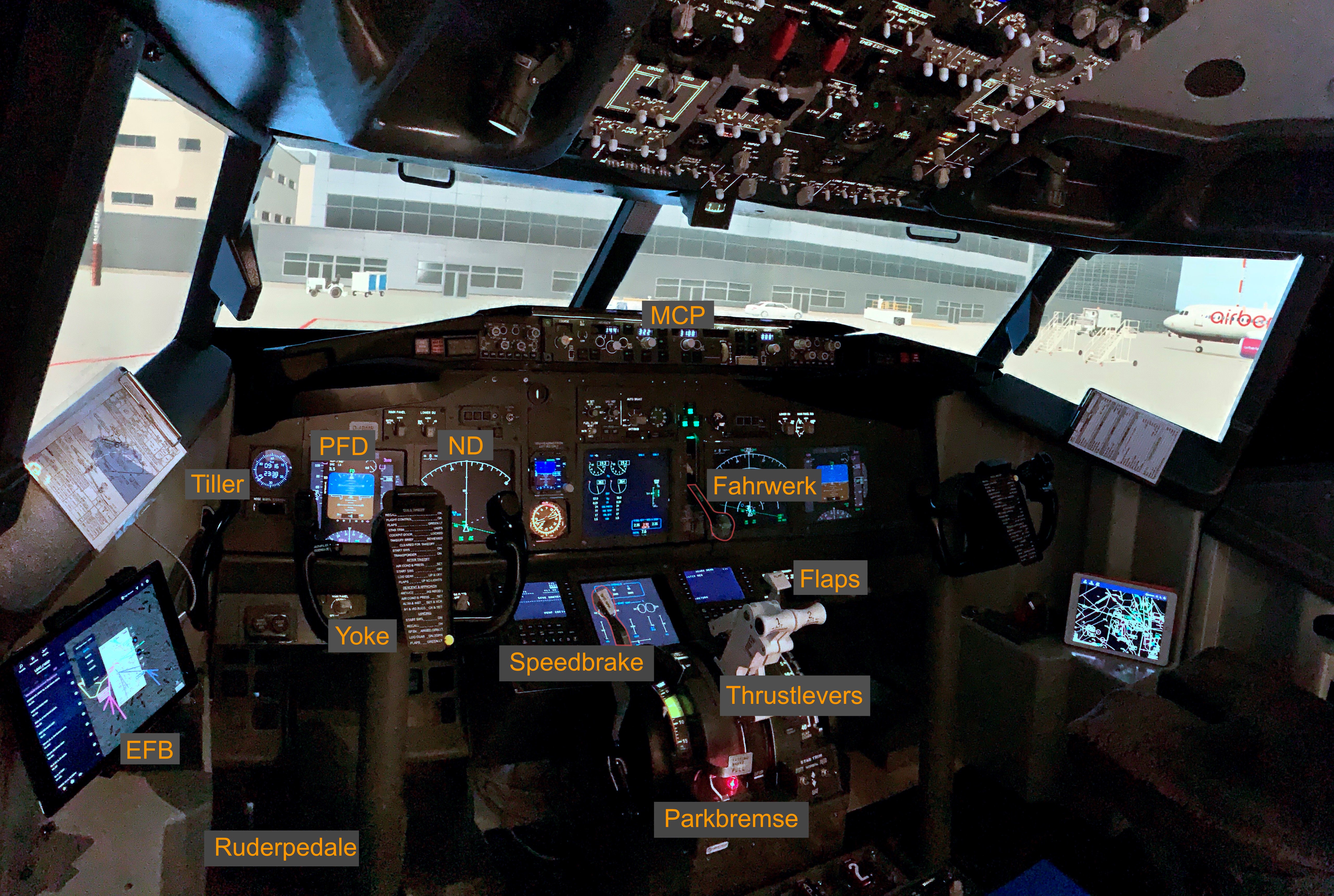Please select language:
The completely new flight simulator model is also a piece of history...
THE IMAGE
...the 737 - 800 with the registration D-AMBR was on the road for Air Berlin from 2013 - 2016. Both the 737's at Lufthansa and the Air Berlin itself are unfortunately now history. Today the aircraft with registration B-7865 is flying in China for Riuli. You can follow it on Flightradar24.
X-PLANE SOFTWARE - LAMINAR RESEARCH
The software used, X-Plane 11 in the professional version, has long been considered the most modern simulation software with excellent graphic quality. It was the first to take the step to 64 bit architecture. This is important because the immense number of objects and sceneries to be loaded on old 32 bit programs led to frequent out of memory problems. X-Plane
CP-FLIGHT COCKPIT HARDWARE & PLUGIN
Since at the beginning of my planning no commercial manufacturer of simulator cockpit equipment supported the X-Plane software, and no one intended to do so, I pushed the development of a new, native plug-in with Jörg Bliesener and CPFlight. A PlugIn connects the switches and displays with the corresponding systems in the software.
So even your own Sim can easily get started with the realistic simulation. Plugin: www.midwest737simulations.com Hardware: www.cpflight.com
737 MODEL- ZIBO MOD
The modified 737 has been copied from the original down to the last detail:
Flight model, controls, trim, flaps, landing gear, fuel, brakes,
engine & controls, EICAS (engine parameter display),
Electrical and other systems such as fuel pumps, hydraulics, cabin pressurization, air conditioning, APU (auxiliary power unit),
FMC with CDU (Flight Management Computer with extremely high simulation depth), navigation systems, MCP/ ModeControlPanel (colloquially autopilot control panel), Flight Director, etc.
INTERNATIONAL COOPERATION
The software comes from the USA, but the developers are spread all over the world.
The hardware control (plug-in) comes from Germany, the aircraft model from Slovakia. The control column (Yoke) comes from Italy, cockpit instruments / panels from Italy, the throttle from Berlin, the 737 Cockpit "Shell" from Canada, real instruments from the USA, image warping software from Holland, projectors from Japan, PC & Mac from China and Ireland.
Throttle: www.cockpitforyou.com
Links & Thanks
The best simulator cannot replace the experience of a real trial flight. I recommend a UL flight with my former colleagues and teachers. From Ampfing you can start with a flight instructor and do your first lesson on a sightseeing flight.
UL flight school www.flugstunde.de
If you want to take a sightseeing flight in the western USA ("Valley") I recommend Walter Gyger's Tradewindaviation at Reid Hillview Airport in San Jose.
www.tradewindsaviation.com
Description of the most important instruments in the cockpit.
YOKE
(TAX HORN)
With it you control the turn by turning the aileron. If you push the yoke you give a control command to sink*, if you pull it to climb. By pushing and pulling you control the elevator and strictly speaking you adjust the angle of attack of the aircraft in relation to the incoming air (angle of attack / attitude)
THRUST LEVERS
(PUSHING LOCKS)
These motorized controllers are used to adjust the thrust of both engines. In the rear position, closer to you, is idle, forward is full throttle. In flight or approach, the aircraft can be kept at a certain speed by Auto Throttle (automatic control of thrust). This is often 140-145 knots depending on weight and other factors such as the selected position of the landing flaps; typically 30 degrees. Knots are nautical miles per hour: 1 knot = 1.8 km/h.
After touchdown you can gently pull the two smaller levers to release the reverse thrust lock. Then you pull up the smaller levers to set the reverse thrust.
MCP
(MODE CONTROL PANEL)
Here you operate the autopilot. You may need some presets like weight, temperature or activating the "Flight Director" (small metal toggle switches on both sides).
Then the MCP allows you to set speed, heading, altitude and sink rate and to activate the modes and autopilot. If a flight plan is to be flown, as is typically the case in air traffic, LNAV (lateral navigation, following the direction of the "magenta line", i.e. the route) and VNAV (vertical navigation or altitude) can be called up here.
Other modes are APP (Approach), VOR (Hold beacon Radial direction)
Then the MCP allows you to set speed, heading, altitude and sink rate and to activate the modes and autopilot. If a flight plan is to be flown, as is typically the case in air traffic, LNAV (lateral navigation, following the direction of the "magenta line", i.e. the route) and VNAV (vertical navigation or altitude) can be called up here.
Other modes are APP (Approach), VOR (Hold beacon Radial direction)
SPEEDBRAKES
(BRAKE CLOSURES)
They extend on the upper side of the wings and disturb the smooth, adjacent airflow around the wing.
This slows down the aircraft a little and increases the sink rate. This is needed, for example, to achieve the required (altitude or speed) profile when the altitude and/or speed is still too high. During approach they are "armed" so that they automatically extend when landing.
TRIM
(TRIM)
The two buttons in the yoke operate the trim. With this you set a desired angle to the flight path (attitude). This way you don't have to pull or push the yoke anymore to reach the desired position or to hold it. This means in other words that you "trim away" the rudder pressure.
EFB
(ELECTRONIC FLIGHT BAG)
This iPad contains mainly the map material with information on airports and related approach and departure procedures as well as an app for setting various parameters of the simulator flight model (fuel, settings, ground power...).
FLAPS
(LAND CLAPPING)
Pull this lever upwards and then adjust it. The landing flaps provide more lift and additionally brake the aircraft. During take-off, typically on flaps 5 (degrees) and for landing, go step by step from 0 towards 30 degrees.
RUDERPEDALS
The pedals control the aircraft on the ground during take-off and landing. To do this, you pedal with feeling in the lower areas of the pedals. The upper area is the toe brakes or toe brakes. These are manual wheel brakes for braking by means of the wheels. These must also be pressed to set or release the parking brake.
TILLER
Control on the ground during taxi'ing and parking is done with this steering wheel. At slow speed the Tiller allows the nose wheel to be turned more inwards and thus allows turning practically on the spot. This is necessary in tight turns and when back-tracing and turning on the track.
PFD
(PRIMARY FLIGHT DISPLAY)
Shows you speed on the left, altitude on the right and climb/descent, below course. In the middle the artificial horizon. Around it more details. Above the active modes of the autopilot.
ND
(NAVIGATIONAL DISPLAY)
Here you can see the lateral situation, i.e. flight path, waypoints, magenta line etc.

